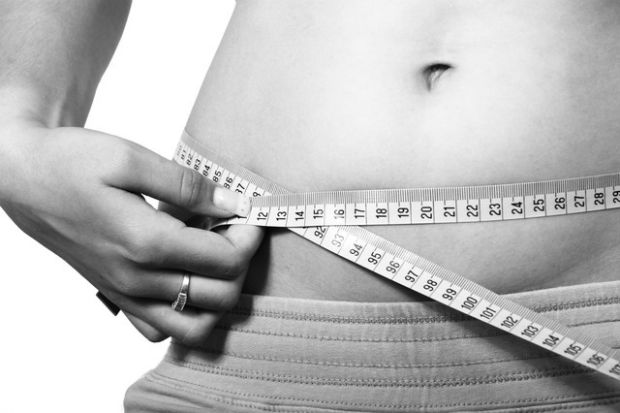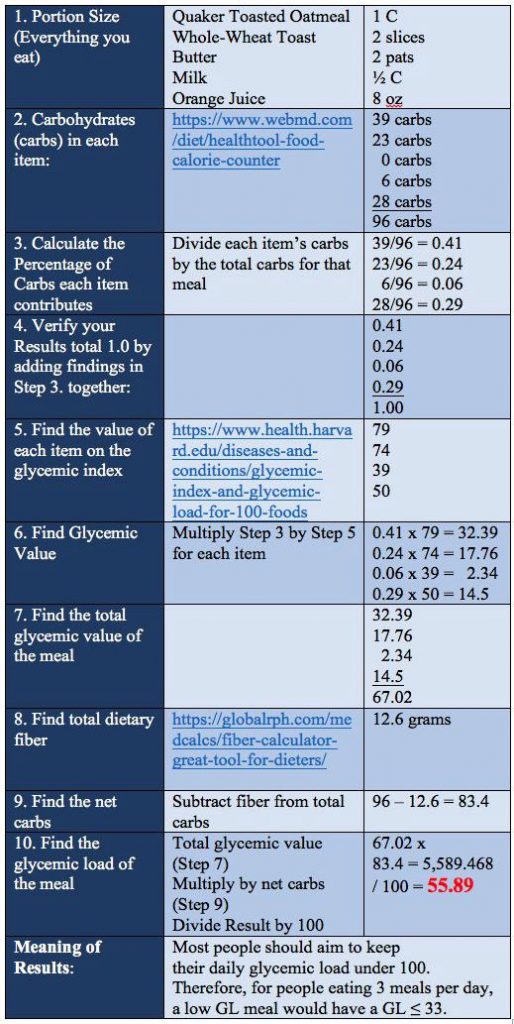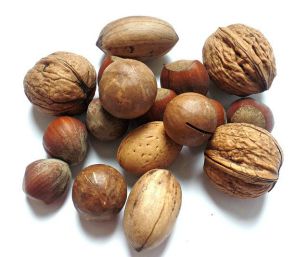Glycemic Load, Glycemic Index, and Insulin Index – Travis Wade Fitness
Glycemic Load, Glycemic Index, and Insulin Index
By Travis Wade
If you’re aiming to shed some pounds or simply want to outsmart your blood sugar, you’ve stumbled upon the nutritional trifecta: Glycemic Index (GI), Glycemic Load (GL), and Insulin Index (II). These three concepts might sound like terms from a medical textbook, but they hold the keys to understanding how your food choices can affect your body’s energy levels, hunger, and fat storage. Allow me to break them down for you.

1. Glycemic Index: The Carbs’ Speedometer
Think of the Glycemic Index as the speedometer for your carbohydrates. It’s a scale from 0 to 100, measuring how quickly a food item raises your blood sugar compared to pure glucose (the Usain Bolt of sugars, sitting smugly at 100). Foods with a high GI are like sprinters, rushing sugar into your bloodstream faster than a toddler on a sugar rush. Bread, rice, and potatoes are some classic culprits.
Why should you care? Well, your body only has room for about three teaspoons of sugar in your blood at any given time (despite our collective sweet tooth). High GI foods cause a sugar spike, triggering your body to release a flood of insulin to clean up the mess. Unfortunately, that insulin surge is often followed by a sugar crash, leaving you tired, hungry, and wondering why you just ate half a loaf of garlic bread.
Low-GI foods, on the other hand, are the tortoises of the carb world: slow, steady, and way better for long-term energy. Think lentils, broccoli, spinach, beans, and cucumbers—nature’s humble superheroes.
| FOOD | Glycemic index (glucose = 100) |
| HIGH-CARBOHYDRATE FOODS | |
| White wheat bread* | 75 ± 2 |
| Whole wheat/whole meal bread | 74 ± 2 |
| Specialty grain bread | 53 ± 2 |
| Unleavened wheat bread | 70 ± 5 |
| Wheat roti | 62 ± 3 |
| Chapatti | 52 ± 4 |
| Corn tortilla | 46 ± 4 |
| White rice, boiled* | 73 ± 4 |
| Brown rice, boiled | 68 ± 4 |
| Barley | 28 ± 2 |
| Sweet corn | 52 ± 5 |
| Spaghetti, white | 49 ± 2 |
| Spaghetti, whole meal | 48 ± 5 |
| Rice noodles† | 53 ± 7 |
| Udon noodles | 55 ± 7 |
| Couscous† | 65 ± 4 |
| BREAKFAST CEREALS | |
| Cornflakes | 81 ± 6 |
| Wheat flake biscuits | 69 ± 2 |
| Porridge, rolled oats | 55 ± 2 |
| Instant oat porridge | 79 ± 3 |
| Rice porridge/congee | 78 ± 9 |
| Millet porridge | 67 ± 5 |
| Muesli | 57 ± 2 |
| FRUIT AND FRUIT PRODUCTS | |
| Apple, raw† | 36 ± 2 |
| Orange, raw† | 43 ± 3 |
| Banana, raw† | 51 ± 3 |
| Pineapple, raw | 59 ± 8 |
| Mango, raw† | 51 ± 5 |
| Watermelon, raw | 76 ± 4 |
| Dates, raw | 42 ± 4 |
| Peaches, canned† | 43 ± 5 |
| Strawberry jam/jelly | 49 ± 3 |
| Apple juice | 41 ± 2 |
| Orange juice | 50 ± 2 |
| VEGETABLES | |
| Potato, boiled | 78 ± 4 |
| Potato, instant mash | 87 ± 3 |
| Potato, french fries | 63 ± 5 |
| Carrots, boiled | 39 ± 4 |
| Sweet potato, boiled | 63 ± 6 |
| Pumpkin, boiled | 64 ± 7 |
| Plantain/green banana | 55 ± 6 |
| Taro, boiled | 53 ± 2 |
| Vegetable soup | 48 ± 5 |
| DAIRY PRODUCTS AND ALTERNATIVES | |
| Milk, full fat | 39 ± 3 |
| Milk, skim | 37 ± 4 |
| Ice cream | 51 ± 3 |
| Yogurt, fruit | 41 ± 2 |
| Soy milk | 34 ± 4 |
| Rice milk | 86 ± 7 |
| LEGUMES | |
| Chickpeas | 28 ± 9 |
| Kidney beans | 24 ± 4 |
| Lentils | 32 ± 5 |
| Soya beans | 16 ± 1 |
| SNACK PRODUCTS | |
| Chocolate | 40 ± 3 |
| Popcorn | 65 ± 5 |
| Potato crisps | 56 ± 3 |
| Soft drink/soda | 59 ± 3 |
| Rice crackers/crisps | 87 ± 2 |
| SUGARS | |
| Fructose | 15 ± 4 |
| Sucrose | 65 ± 4 |
| Glucose | 103 ± 3 |
| Honey | 61 ± 3 |
| Data are means ± SEM. * Low-GI varieties were also identified. † Average of all available data. | |
Reprinted with permission from Fiona S. Atkinson, RD, Kaye Foster-Powell, RD and Jennie
C. Brand-Miller, PHD: International Tables of Glycemic Index and Glycemic Load Values: 2008
Diabetes Care 2008 Dec; 31(12): 2281-2283. https://doi.org/10.2337/dc08-1239. Copyright
2008 by the American Diabetes Association
2. Glycemic Load: The Bigger Picture
The Glycemic Load takes GI one step further, factoring in portion size. Because let’s face it, no one eats just one noodle or a single slice of bread (unless you’re modelling for a food ad). GL is calculated using this fancy equation:
(Grams of carbs × GI) ÷ 100 = GL
For example, let’s say you had a meal that weighed 1 kg, but there were only 500 grams of carbohydrates in it. We would need to know the glycemic index of each of the different types of food in the meal to get an average. For the sake of this example, let’s say the average glycemic index of the meal was 52. The glycemic load is then calculated as 52×500/100=260.
This means that even a high-GI food like pasta won’t wreak havoc on your blood sugar if you eat it in moderation (yes, moderation—a word most of us wish didn’t exist). For example, a heaping plate of spaghetti might have a sky-high GL, but a modest portion paired with veggies can be a more balanced option.
How To Calculate Glycemic Load

3. Insulin Index: The Plot Twist
If you thought only carbs were the villains in this story, the Insulin Index is here to introduce some plot twists. Unlike the GI, which focuses solely on carbs, the II considers the insulin response triggered by all types of food—including proteins and fats. Foods like yogurt, fish, and even oranges might have a low GI but can still spike insulin levels.
Why is insulin so important? Think of it as your body’s storage manager. When insulin levels rise, it signals your body to stash away calories, either in your muscles (if they need energy) or as fat (if they don’t). So, if weight loss is your goal, keeping insulin spikes in check is key.
The Winning Food Choices
Navigating the glycemic jungle can feel overwhelming, but the good news is you don’t need to memorize every index or load. Focus on nutrient-dense, whole foods that nourish your body without sending your insulin into overdrive. Here’s a cheat sheet of good-for-you options:
Protein



Poultry: chicken, turkey, duck, pheasant, Cornish game hen, look for hormone and antibiotic-free.
Seafood: mackerel, anchovies, clams, cod, crab, flounder/sole, herring, small halibut, mussels, wild salmon (canned or fresh), sardines, sable, shrimp, scallops, trout.
Eggs: Up to 8 per week, organic or omega 3 eggs only.
Red or Wild Meat: lamb, beef, bison, venison, ostrich, deer, elk.
Soy: tofu or tempeh, organic non-GMO only.
Nuts: almonds, Brazil, cashews, hazelnuts, macadamia, pecans, pine, pistachios, walnuts, raw cacao.
Seeds: chia, flax, hemp, pumpkin, sesame, sunflower.
Nut/Seed Butters: Almond, cashew, pecan, macadamia, walnut.
Nut Flours: almond meal, coconut flour.
Fruit

Blackberries, blueberries, cranberries, kiwi, lemons, limes, raspberries.
Fat

For cooking with high heat: grass-fed butter, grapeseed oil, avocado oil.
For cooking with moderate heat: grapeseed oil, coconut oil, unrefined sesame.
Preparation without heat: flaxseed, extra virgin olive.
Nuts & Seeds: (See above).
Fish: mackerel, sardines, trout, herring, anchovies.
Produce: avocado, olives, raw cacao, coconut.
Beverages

Purified water, herbal tea, seltzer, mineral water (in moderation).
Non-Starchy Vegetables

Artichokes, arugula, asparagus, avocado, bean sprouts, beet greens, broccoli, Brussels sprouts, cabbage, cauliflower, celery, chives, collard greens, cucumber, dandelion greens, eggplant, endive, garlic, ginger root, green beans, hearts of palm, kale, kohlrabi, lettuce, mushrooms, mustard greens, onions, parsley, peppers (bell, chilli, etc.), radicchio, radish, rutabaga, seaweed, shallots, snap beans, snow peas, spinach, summer squash, Swiss chard, tomatillos, tomatoes, turnips, turnip greens, watercress, zucchini.
From Dr. Mark Hyman’s “10 Day Detox Diet“
Final Thoughts: Balance is the Secret Sauce
While it’s tempting to label foods as “good” or “bad,” remember that context matters. A slice of high-GI watermelon on a hot summer day isn’t the enemy—especially when balanced with some protein or fat. By understanding the interplay between GI, GL, and II, you can make smarter choices without sacrificing the joy of eating.
After all, food is meant to fuel both your body and your soul. So go ahead, enjoy that slice of bread—just maybe not the whole loaf.
I wish you lots of health, love and happiness!
Travis Wade
The only holistic personal trainer in Edmonton.
Want To Get Started On A New Lifstyle Right Away?
Or
Would You Like A Plan To Achieve Your Fitness Goals?
Sign Up For Online Personal Training!


